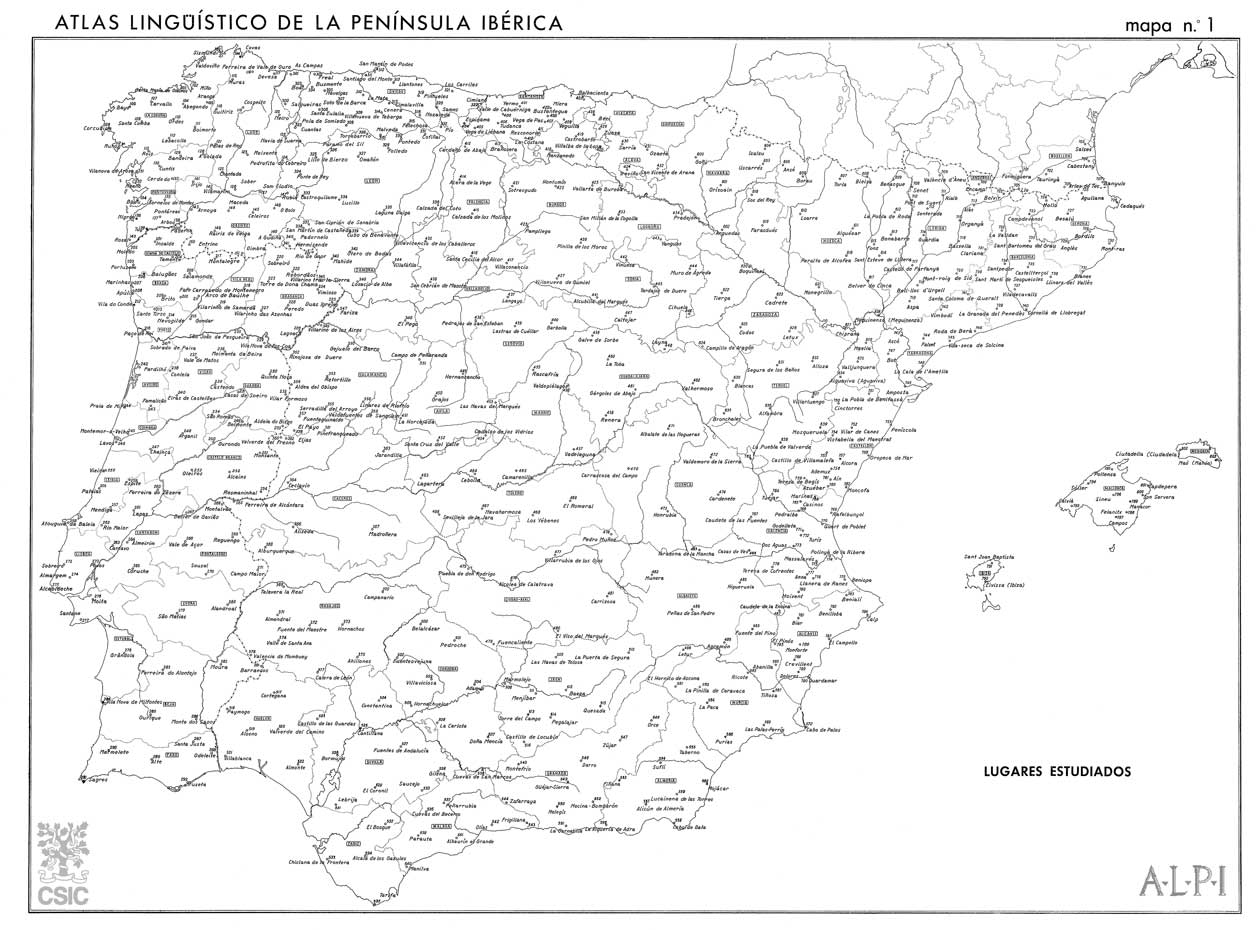The survey network of the Atlas Lingüístico de la Península Ibérica [Linguistic Atlas of the Iberian Peninsula] (ALPI), which includes the peninsular Iberian-Romance linguistic domains together with the Balearic Islands, is a broad network, as befits a large domain atlas. There are certain imbalances between some zones and others that allow us to glimpse the researchers’ particular interest in historical varieties at the outset. This is why the survey network is occasionally not dense enough in areas where innovative Castilian varieties are spoken. According to the ALPI’s own researchers, at the time of defining the survey network they took into account the points’ interest as well as geographic and historic factors:
Ocurre por ello, que la red de localidades estudiadas es poco simétrica, puesto que es más tupida en las zonas de más intensa diversidad dialectal, como Asturias, que en regiones de mayor nivelación lingüística, como el centro de Castilla.
Fueron generalmente preferidos en el ALPI los pueblos pequeños, en los cuales el habla y la cultura popular tradicionales se mantenían casi incontaminadas de la influencia de las formas más regulares y uniformes de las poblaciones importantes.
[ As a result, the network of points surveyed is not very symmetrical, since it is denser in areas of highest dialectal diversity, such as Asturias, than in regions of higher linguistic leveling, such as central Castile.
Smaller villages where the speech and the traditional popular culture remained almost untouched by the influence of the more regular and uniform forms of larger towns were generally preferred in the ALPI. ]
(Introducción, 1962: 8)
The network consists of 529 localities that, as was customary in geo-linguistic fieldwork of that era, do not include provincial capitals nor other important cities. According to the Introduction of the ALPI, there was a plan to study the cities, which were considered centres of linguistic influence, in an appendix along with “experimentally recorded materials, in order to facilitate, above all, the research on matters related to the rhythm and intonation”, but it was never carried out.
As noted, the surveys cover the Romance territories of the peninsula, along with the Balearic Islands and the extensions of Catalan into Roussillon, but do not include Ceuta, Melilla, nor the Canary Islands, Madeira and Azores Islands, which they had thought of studying “in complementary appendices”.
For mapping the first volume, seven zones were distinguished and the survey locations were numbered among them correspondingly:
- Galicia (100-151),
- Portugal (200-292),
- Asturias, León and Extremadura (300-377),
- the two Castillas and Albacete (400-489),
- Andalusia and Murcia (500-570),
- Navarra and Aragon (600-639),
- Andorra, Rousillon, Catalonia, Valencia and the Balearic islands (700-803)




